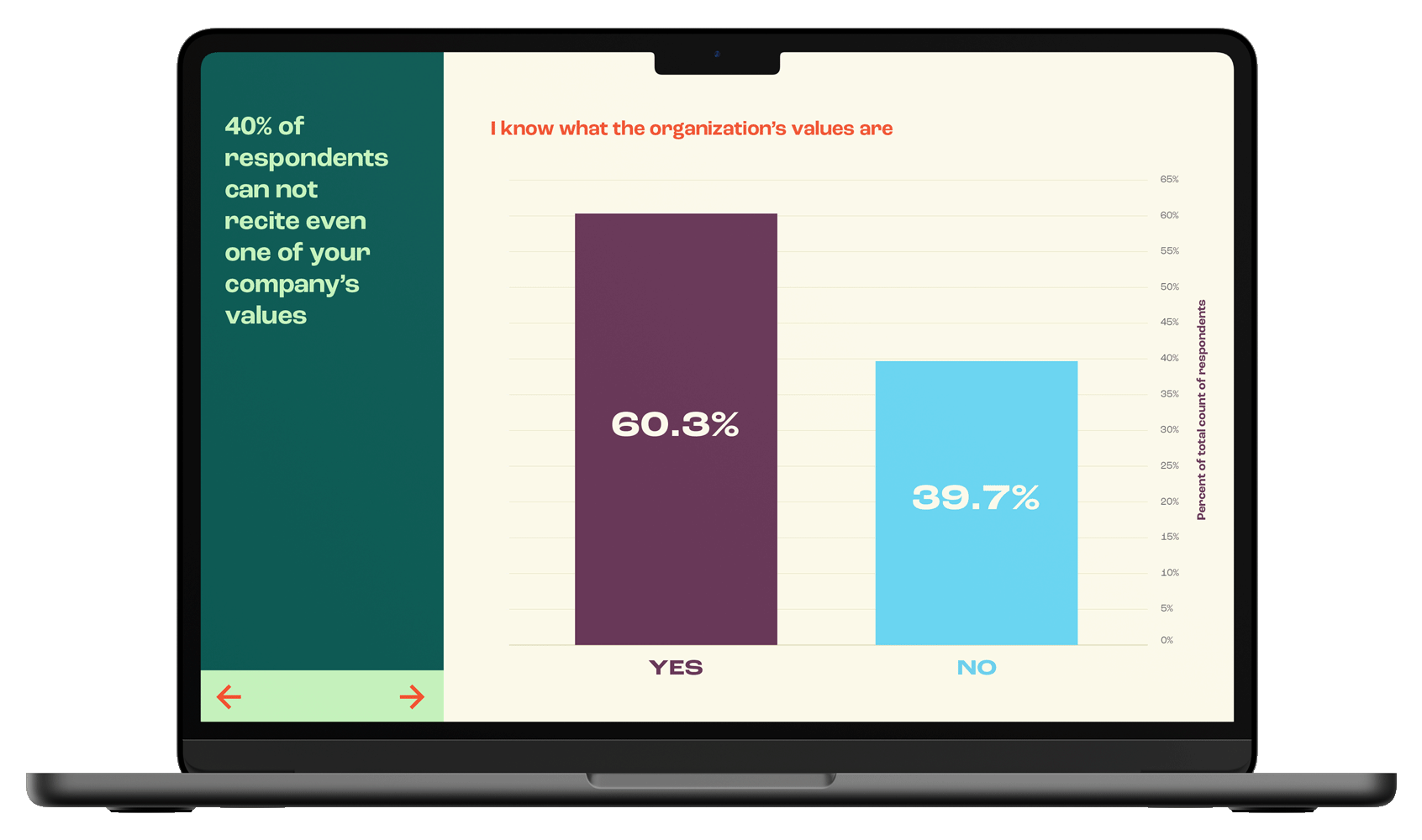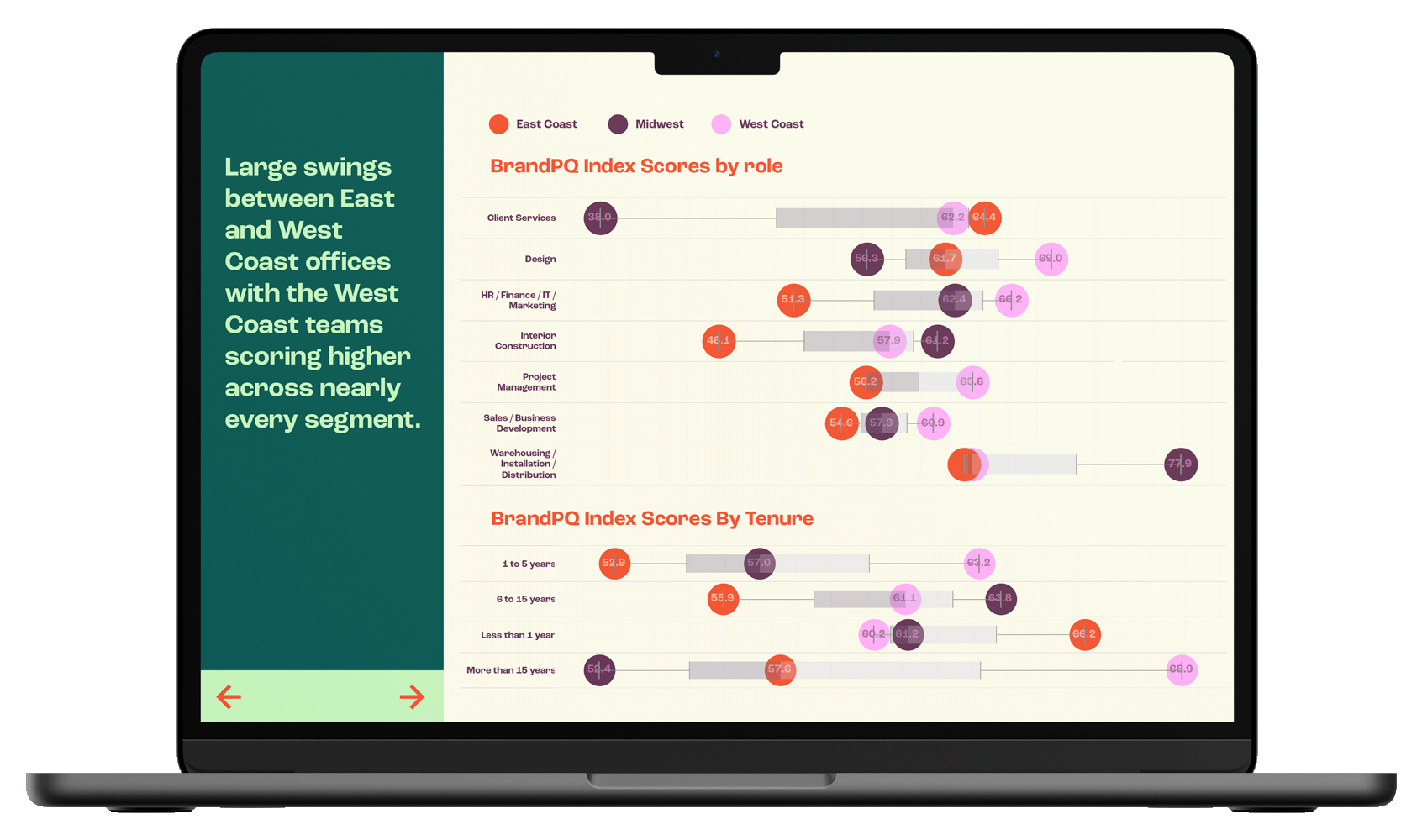The four dimensions of brand pride
Your BrandPQ™ measurement is derived from employee insights that address the four dimensions of internal pride.

Purpose Expression
Every successful brand has a clearly articulated purpose, one that employees know and understand.
Is your purpose articulated in an authentic, inspiring, and differentiated way?
Do your people know what it is, and what it means?
Personal Meaning
A clearly articulated purpose only drives performance if employees feel connected to and inspired by it.
Is it codified and made meaningful at an individual level?
Does it matter to your people? Do they believe it, and does it inspire them?
Does it drive their performance?
Collective Connectedness
A meaningful brand purpose should bring employees together and contribute to company culture.
Is it reinforced across the organization?
Is it a unifying force within the organization? Is it a culture multiplier?
External Activation
While your brand purpose should be meaningful to employees, the outside world needs to know and relate to it, too.
Is it brought to life outside of your organization?
Does it create value? Is it a competitive advantage?
How we gather insights
Our platform provides scoring, analysis, and audience insights that can be used to address problem areas, boost pride, and enhance performance. Here’s how we do it.

Primary questions
Employees answer primary questions at the top level of each of the four dimensions of brand pride. Their responses determine your organization’s overall BrandPQ™ score.
Sample insight:
“40% of respondents can’t recite even one of your company’s values.”

Diagnostic questions
These questions help us identify the reasons for your BrandPQ™ score. We assess your organization’s score in each of the four dimensions and determine which areas need to be addressed for maximum impact.
Sample insight:
“37% or more of employees don’t feel they were formally trained in the purpose and values of the organization.”

Cross-tab analyses
We use cross-tab analysis to compare brand pride among employees. This gives us insight into any meaningful differences between employees based on level, longevity, geography, department, and/or business unit.
Sample insight:
“There are large swings between East and West Coast offices, and exceptionally low scores from colleagues acquired from the merger.”
How proud is your organization?
Let’s find out together. Connect with us to see how our BrandPQ™ insights platform can help you inspire people and drive performance.